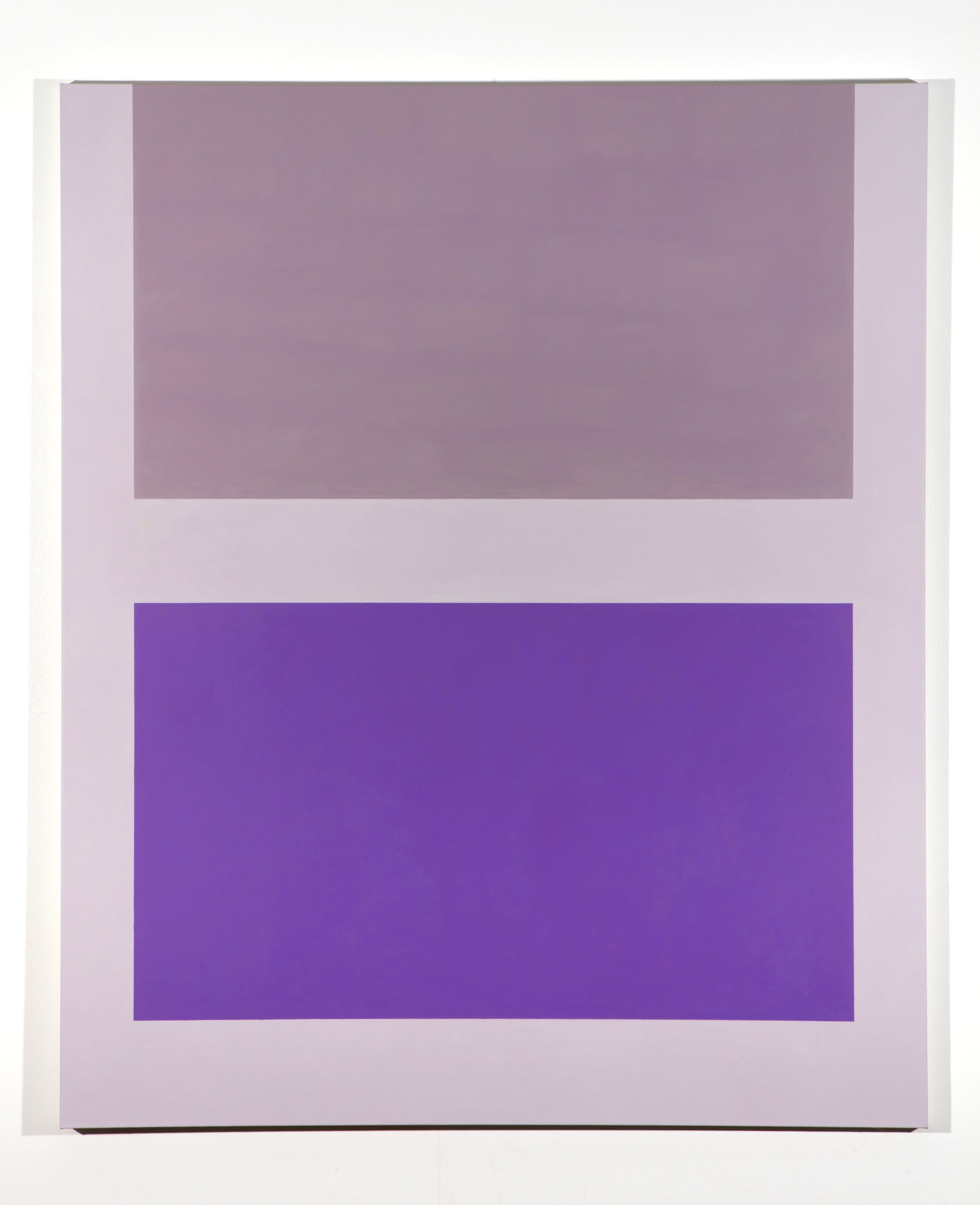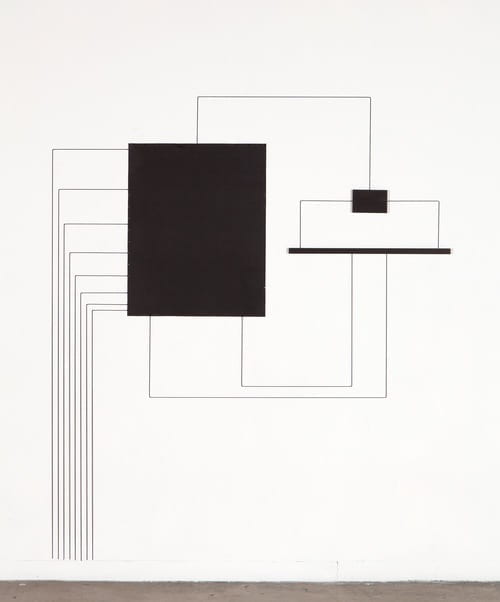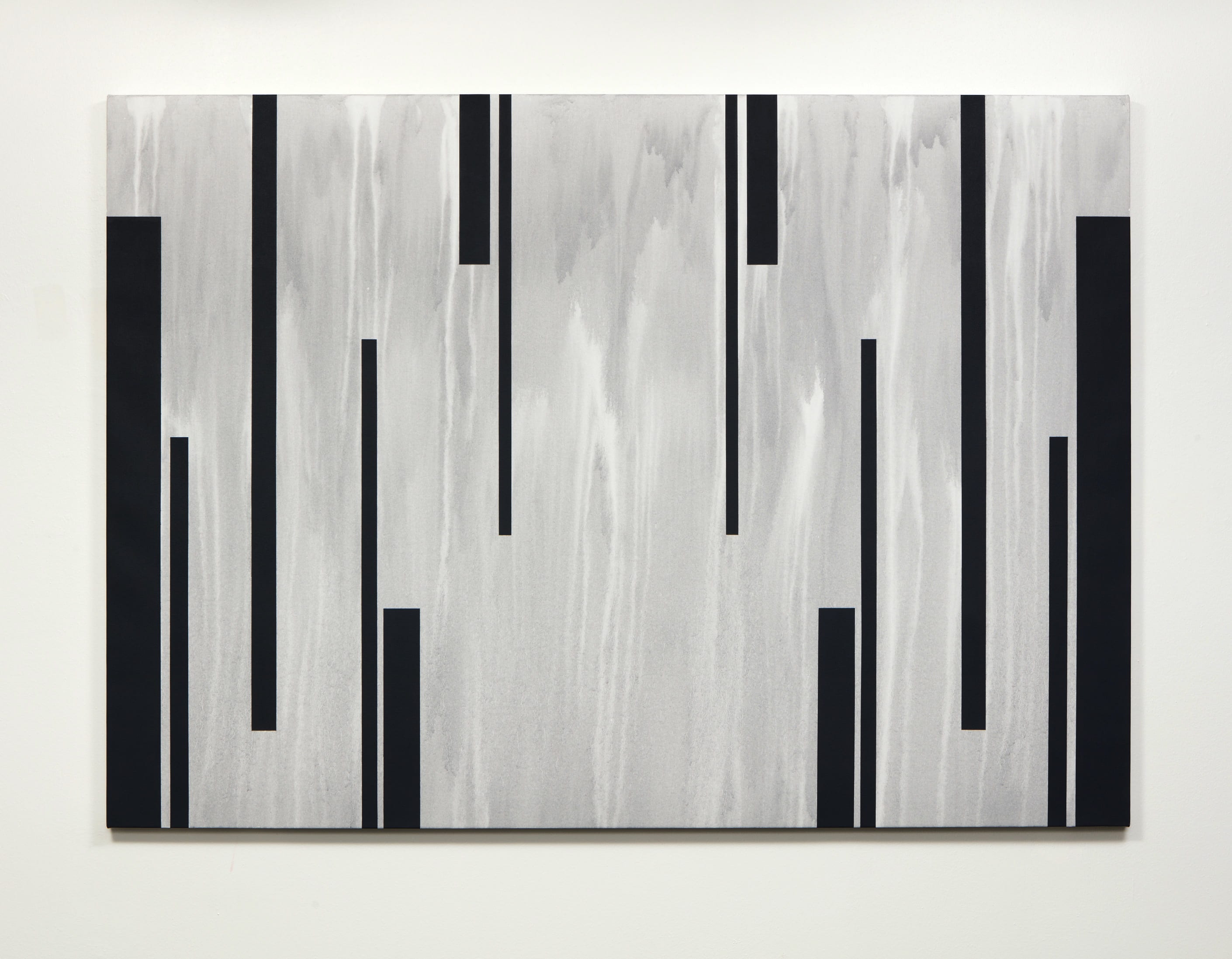
The art exhibition Scott Gleeson: Travels in Ithaca charts an uncertain and perilous itinerary through the spaces of the Hamon Arts Library Foyer, Lobby, and the Mildred Hawn Gallery, calling viewers’ attention to the social costs of warfare as seen through the lens of Homeric myth. Each of the twelve graphic works in this site-specific installation reference significant events in the life of Odysseus leading up to his return to Ithaca and eventual murder at the hands of his illegitimate son Telegonus. Together, the twelve works constitute a theoretical proposition about one possible role abstract image making or architectural ornament might play if creative professionals chose to address veterans’ issues in their practices. The overarching question proposed by the exhibit is, “What is the social role or responsibility of the artist in responding to the social costs of war, promoting cultural memory of historical events, and facilitating the healing process for veterans and communities?” To address this question Travels in Ithaca imagines a very specific problem with psychotraumatology literature on the Eye Movement Desensitization and Reprocessing therapy method: “How shall patients benefit from therapy in the absence of the therapist given the problems with long treatment delays in the VA healthcare system?” Travels in Ithaca posits deploying cheap, modular architectural ornamentation and graphic imagery designed to facilitate the self-administration of the EMDR method within domestic or institutional interiors.
Each individual work functions as an argument in the proposition: introducing important themes central to Homeric understandings of trauma, highlighting relevant discourses within psychotraumatology literature, or testing the efficacy of select compositions, forms, and colors for stimulating or facilitating eye movements or “bilateral stimulation,” a key component of reprocessing therapies.
The layout of the show capitalizes on the newly redesigned foyer and lobby of the Hamon Arts Library, which has been transformed from a dim, quiet space with publicly accessible computer terminals and an information desk, to an open, well-illuminated social space. From outside the library, patrons may see the centerpiece of the installation in the distance against the back wall of the Mildred Hawn Gallery, The Suitors of Ithaca (Bilateral Stimulation Unit). This abstract representation of Penelope, Odysseus’ faithful spouse, flanked by twelve suitors situates the viewer in the perspective of the hero Odysseus longing to be reunited with his wife after twenty years abroad. The Suitors… attempts to codify and refine a color theory for creating images to facilitate or induce “bilateral stimulation”, the ostensibly healing left-right eye movements of Francine Shapiro’s trauma therapy method. In this composition twelve intensely colored, linear elements flank a cool central figure suspended within a neutral, cool field. Because the eye privileges warm or intense hues over cool or neutral hues, the viewer may discover their gaze being pulled from left to right, passing over or pausing only briefly on the central figure of Penelope.
Upon entering the foyer patrons must pass between the two works representing the perils of Charybdis and Scylla. Charybdis, proposes using line color, weight, and temperature to facilitate the viewer’s eye movement along a predetermined trajectory. Inspired by the whirlpool peril past which Odysseus sails after leaving Circe’s island, Charybdis presents an aqua blue field surrounded by bars of warmer colors which shift in temperature from hot to cool in a clockwise motion. Scylla, a white wall relief composed of 22 wood and cordage elements, posits the renewed investigation of the psychological and spiritual impact of architectural ornament on the inhabitant, a field of architectural inquiry which now falls within the rubric of ‘environmental psychology’. Social theorists and architects like John Ruskin and Owen Jones identified the importance of ornament as an antidote to social ills and the psychological perils of living in modern urban industrial societies. Modernist architects working in the 20th Century, however, widely rejected these ideas, seeing ornament as a cause of illness rather than a cure, and this legacy of stripped-down interiors and architectural facades persists today. Scylla plays with modernist visual tropes and notions of aesthetic hygiene, yet is designed to operate within modernist institutional or white cube gallery spaces. More recently, theorists such as Edward T Hall and Roger Ulrich have argued the significance of the effect of architecture or landscape on the psychology of the inhabitant, leading to new insights in historic design practices and new strategies for designing healthcare environments.

Once past the Lobby, patrons may experience two related works positing alternative functions for the compositional elements, lines and planes, respectively. Phaeacian Dream I references the healing power of dreams as represented in Odysseus’ final voyage to Ithaca on the magical Phaeacian ship, a sentient nautical architecture which knows the minds of its passengers and steers its course according to their inner thoughts and desires. The painting displays a single vivid field of color measuring 25 x 40 inches in the lower portion of the composition, paired with an identically sized field of the same color, neutralized. By pairing intense and neutral hues Phaeacian Dream I suggests an analogy with memories (“cognitions”) in their traumatic (vivid) and processed (neutral) iterations as represented in psychoanalyst Francine Shapiro’s model of cognition. Alternatively, The Phaeacian Ship, a composition of symmetrical linear elements against a background of washed blue acrylic, tests the efficacy of certain linear forms and color combinations for facilitating bilateral stimulation. This painting underscores the significance of REM sleep to Francine Shapiro’s hypothesis about the efficacy of therapist-guided eye movements performed during treatment.
Proceeding into the gallery space the viewer travels back in time to the moment when Palamedes exposes Odysseus’ insanity as a ruse to avoid military service, placing the hero’s son, Telemachus, before the path of the plow. In Telemachus Before the Plow (EMDR Visual Aid), utility cords of varied colors connect canvas or wood elements in a visual circuit designed to facilitate the viewer’s eye movement across an area 54 inches high x 84 inches wide. Planar elements are intended to signify “cognitions”, troubling thoughts or memories as represented in Shapiro’s model of cognition; while the linear elements serve as visual trackways to guide the healing eye movements central to the EMDR therapy method. All elements tack directly to the wall, suggesting renewed aesthetic debates about the psychological significance/impact of architectural ornament once common in the mid-19th through the mid-20th Centuries. Composed of 56 individual elements dispersed in a decentralized arrangement, Telemachus challenges the presentation format typical of traditional painting in a gallery context, a discrete rectangular canvas mounted to a wood stretcher, thus blurring the boundaries between painting, sculpture, design and architecture. This work is inspired by the pathos of Kurt Schwitters’ Hannover Merzbau (1923-37) and El Lissitsky’s similarly immersive, yet more overtly political installation, Prounenraum (1923).

Proceeding to the right, the viewer encounters a brightly colored painting on canvas, The Oarsmen (Bilateral Stimulation Unit). In the field of military psychotraumatology, combat deployment transit methodology is regarded as one primary risk factor in determining a soldier’s (mal)adaption to trauma exposure. There is a direct correlation, for instance, between the number of PTSD diagnoses and rapid individual deployment used in the Vietnam Era versus slow nautical unit deployment used in earlier conflicts, such as World War II. It is widely agreed that soldiers given time to decompress from the stresses of combat while in the company of their fellow soldiers run less risk of succumbing to traumatic injury upon return from war. The Oarsmen underscores the mental health benefits of slow nautical unit deployment, reproducing the triple-tiered structure of the Greek Trireme in the three pairs of blue bars within the center of the composition.
Circe Presenting the Spear to Telegonus is an EMDR Visual Aid which imagines a possible scenario in the lost Homeric epic, The Telegony, when the instrument of the hero’s death, a poisoned spear fashioned by the witch Circe, is given to their illegitimate son, Telegonus, before he embarks on a journey to find his absent father. In this work, the formal connection between the basic compositional elements is further secured to homologous structures or forms in the legend: the characters of Circe and Telegonus are represented by planar ‘cognitions’, and a linear wood molding represents the poisoned spear.
The motif of symmetry was refined and simplified in the Bilateral Stimulation Unit titled Odysseus and Circe Negotiating the Terms of Seduction. In this canvas, horizontal bars painted in pastel or neutral hues span a white void marked with faint spatter and drips on diluted fluorescent paint. This work connects a motif of dialog with the motif of symmetry through association with a scene in the Odyssey where the hero and sorceress first meet.

The theme of interpersonal dialog is further associated with the motif of combat in the Bilateral Stimulation Unit Odysseus and Telegonus, a large canvas executed en grisaille. This painting explores the tonal figure/ground relationship and subtle ways of introducing asymmetry into a symmetrical composition. Retelling the story of the fatal confrontation between Odysseus and his illegitimate son Telegonus, this painting suggests a homologous relationship between Circe’s cursed spear (or projectiles in general) and a basic compositional element, the line. Differences between the length and weight of the lines establish relationships to their pairs on the opposite side of the composition, thus inducing bilateral stimulation.
The final work in the cycle is perhaps the most significant and ambitious contribution to the series because the ideas expressed within the other works are presented in their most reduced form. Odysseus Transfixed on the Spear of Telegonus is a khaki painting on linen tacked directly to the gallery wall over which is mounted a single horizontal wood molding. This work refers to the tragic fate of the hero in Homeric myth, calling attention to an epidemic of post-deployment death and suicide among US combat veterans of the Iraq war and Global War on Terror. Whereas other works in the series speak to a promise of hope and healing, Odysseus Transfixed reminds viewers of the many obstacles veterans face on the road to recovery.